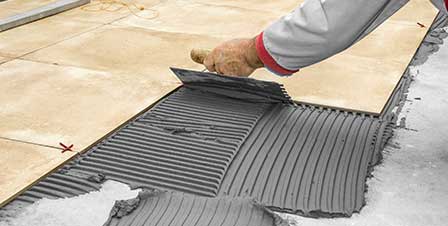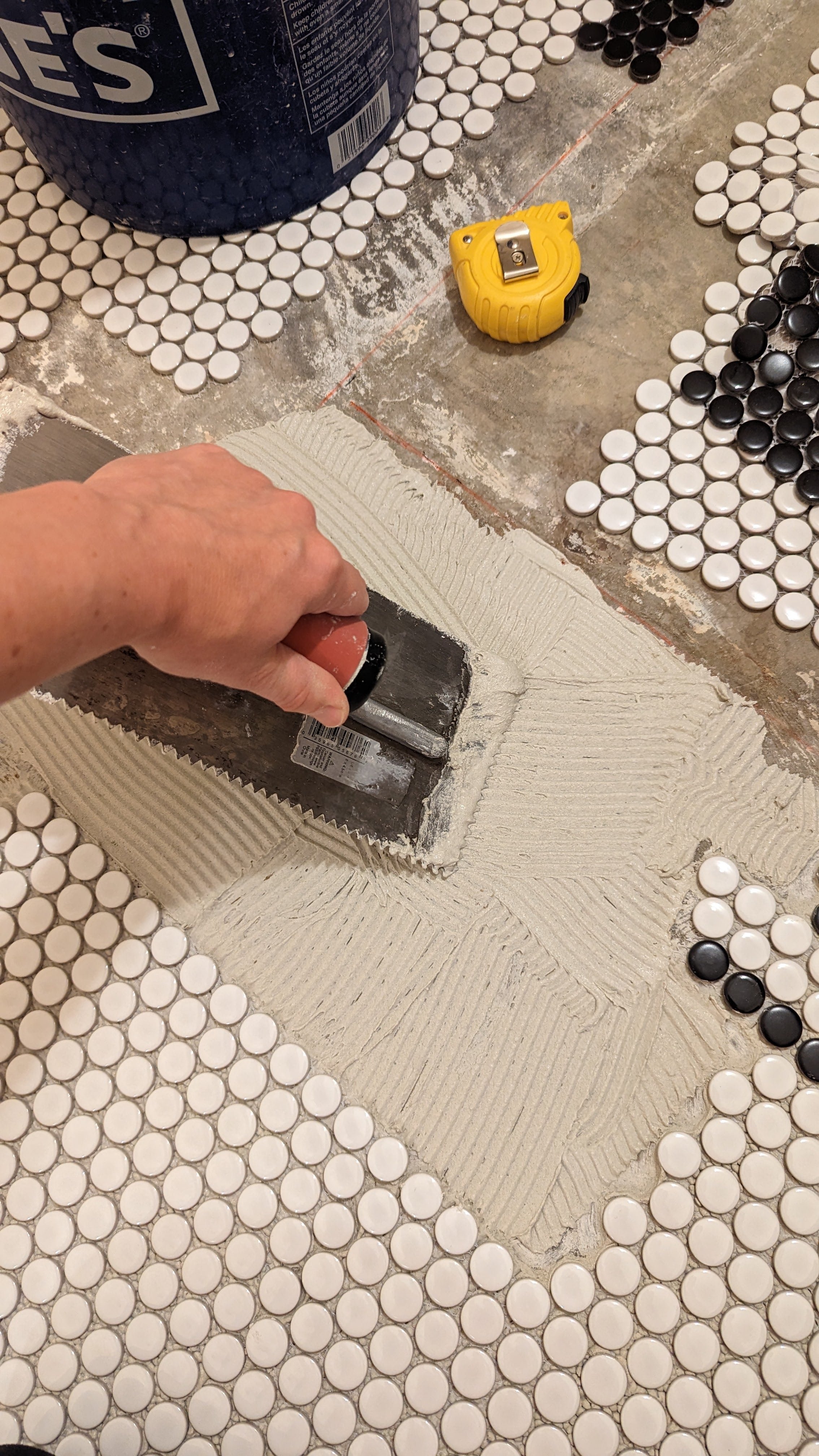Your Trusted Partner for Tile Installation Austin and Beyond
Your Trusted Partner for Tile Installation Austin and Beyond
Blog Article
Discover the Secrets to Perfect Floor Tile Installment Every Time
Achieving perfect tile setup may feel like a daunting job, usually resulting in stress and blemishes that take away from the total visual. Mastering the art of floor tile setup includes a series of specific steps and strategies that, when implemented appropriately, can result in a polished and smooth coating. From surface preparation to grout application, each stage plays a critical duty in the final outcome of your project. By recognizing the keys behind each step, you can make sure that your floor tile installation not only satisfies but surpasses your expectations.
Correct Surface Area Preparation
Efficient tile installment hinges considerably on meticulous surface area prep work to make sure a flawless result. Before laying ceramic tiles, it is critical to analyze the substrate's problem completely. The surface has to be clean, completely dry, and structurally sound to prevent future problems such as loosened floor tiles or cracked grout. Any existing flooring product, adhesives, or sealants ought to be gotten rid of to create a consistent base for the new ceramic tiles.
To ensure correct adhesion, it is recommended to rough up smooth surfaces through sanding or scarifying. In addition, using a guide can improve bonding in between the substratum and the floor tile adhesive. Unequal surfaces ought to be leveled making use of a self-leveling substance to prevent lippage and make certain a smooth finish.
Furthermore, checking for potential resources of wetness is vital, as excess wetness can cause mold and mildew growth and damage the ceramic tiles with time. Using a wetness obstacle or waterproofing membrane layer in damp areas like kitchen areas or bathrooms is important to secure the ceramic tiles from water damages. By carefully preparing the surface before ceramic tile setup, one can create a durable and aesthetically appealing tiled location that will certainly stand the examination of time.

Picking the Right Adhesive
Choosing the appropriate adhesive is a critical action in ensuring the effective setup of ceramic tiles. The kind of sticky you select will depend on numerous aspects such as the sort of ceramic tile, the substrate product, and the place of the setup. There are various kinds of adhesives available on the market, including thin-set mortar, mastic, and epoxy.

Epoxy adhesives are very sturdy and water-resistant, making them excellent for locations vulnerable to moisture such as kitchen areas visit or shower rooms. They are likewise suitable for installing glass or metal floor tiles. When selecting a glue, ensure to comply with the maker's suggestions and think about the specific demands of your tile installment project.
Precision Cutting Methods
One of the most common devices utilized for precision cutting in ceramic tile installation is the tile cutter. Floor tile cutters come in different types, including manual tile cutters, electrical wet saws, and handheld tile cutters. Hands-on tile cutters are ideal for straight cuts on ceramic and porcelain tiles, giving tidy and exact sides.
Furthermore, making use of tools like tile scribes or glass cutters can help in scoring and this hyperlink breaking tiles with accuracy. By mastering these accuracy reducing methods, ceramic tile installers can guarantee a specialist coating and a visually attractive result in their floor tile jobs.

Cement Application Tips
When transitioning from accuracy cutting strategies to grout application in ceramic tile installment, focus to information and technique is paramount for attaining a flawless finish. Grout offers not only as a useful component that fills up the voids between ceramic tiles but additionally plays a significant function in the overall aesthetic of the installation.
When applying grout, work in small areas at once to avoid it from drying as well rapidly. Use a rubber float to push the cement right into the joints at a 45-degree angle, ensuring complete protection and condensing the material. When the cement is applied, make use of a moist sponge to clean the ceramic tiles, making certain not to get rid of cement from the joints. Lastly, buff the floor tiles with a completely dry cloth to eliminate any type of haze and achieve a polished coating. Adhering to these cement application pointers will certainly lead to a skillfully mounted ceramic tile surface that improves the appeal of any kind of room.
Ending Up Touches and Upkeep
To complete the tile setup job successfully, focus to detail throughout the finishing touches and regular maintenance is crucial. After the grout has dried and the tiles are securely in location, the final steps involve ensuring that all sides are correctly sealed. Using a top quality sealant around the perimeter of the tiled location aids prevent water damage and prolongs the life of the installation. In addition, examining for any loose floor tiles or cement and resolving them immediately can prevent a lot more substantial concerns down the line.
Normal maintenance is key to preserving the charm and performance of your tiled surfaces. An easy routine of sweeping or vacuuming complied with by mopping with a gentle cleaner can assist keep your floor tiles looking immaculate (tile installation austin). For areas check these guys out that are frequently subjected to moisture, such as restrooms or cooking areas, routine resealing of cement lines is recommended to protect against mold and mildew and mildew development
Conclusion
In final thought, achieving excellent tile setup every time needs focus to detail and correct techniques. By concentrating on surface area preparation, choosing the proper adhesive, making use of precision reducing methods, applying grout thoroughly, and completed with attention to information, you can guarantee a professional-looking outcome. Bear in mind to comply with these actions and preserve your floor tiles frequently to lengthen their life expectancy and maintain them looking their finest.
One of the most common tools used for precision cutting in tile installation is the floor tile cutter. Tile cutters come in various types, including hands-on tile cutters, electric wet saws, and portable floor tile cutters. Hand-operated tile cutters are suitable for straight cuts on ceramic and porcelain tiles, supplying precise and tidy sides. In addition, making use of devices like tile scribes or glass cutters can assist in racking up and snapping floor tiles with precision. By mastering these accuracy reducing techniques, floor tile installers can ensure a professional coating and an aesthetically enticing result in their tile projects.
Report this page